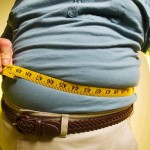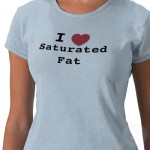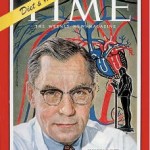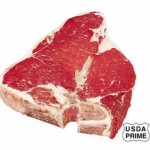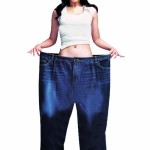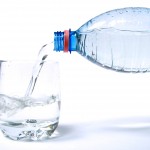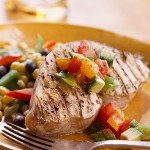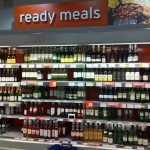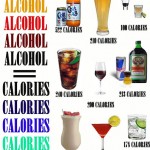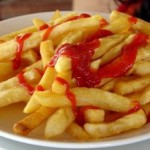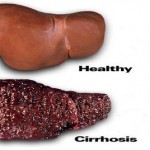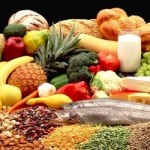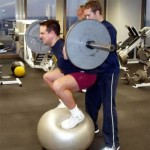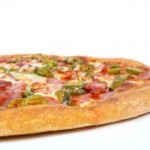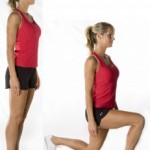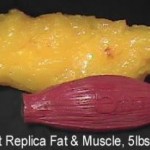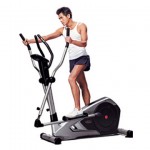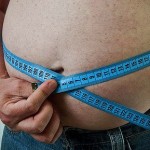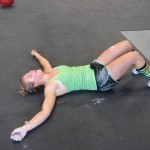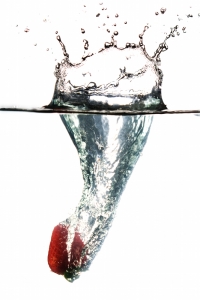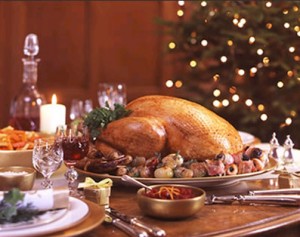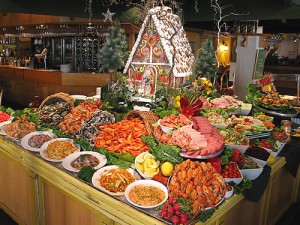 Welcome back!!
Welcome back!!
This week an extremely ‘doable’ 30 day fat loss via food plan… Read it, do it and you can expect dramatic and EASY Fat Loss…
Regular readers know that you can’t out train a bad diet. In your quest to lose body fat and to re-condition your metabolism food has to come first.
I’m far from the first to say and I certainly won’t be the last – and anyway you already know
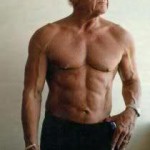 Even over 70 you can look this good!!
Even over 70 you can look this good!!
this. It might be deep down, it be hidden but you KNOW this…
So food is first – here are some simple but effective guidelines for your nutrition. Follow these and you’ll rip off the body fat in no time (well about 30 days actually)
As a definite plus if you adopt these guidelines for the long term than you’ll likely live longer with more energy, more health and a lot more enjoyment…
Okay – the Guidelines: Eat lots of these foods…
In order to maximise fat loss and improve overall health you need to eat:
- Foods that are nutrient dense and calorie sparse
- To improve the absorption of these nutrients in your gut
- Food in a macronutrient format that improves your body composition
- Enough good quality foods to meet as many of your micro- & macro- nutrient needs as possible from your food
- Using sensible timing & spacing to control both cravings and hormone release
You should NOT eat:
- Foods that harm you – and you know what they are!!
- Foods that are calorie dense and nutrient sparse
- Foods that say now with added vitamins!
- Foods that contain what I’ll call antinutrients – like most grains and processed grain products
- Foods that contain trans fats, HFCS and lots of sugar in any form.
Look there are (last time I looked 12+ months ago over 2.5 Million diets & programs out
 Cops may lov’em but the trans fat keep you fat…
Cops may lov’em but the trans fat keep you fat…
there. Some are good (anything by Berardi of Precision Nutrition fame or Rousseau of Warp Speed Fat for example), a few great, many crap and more than a few that deliver short term results only…
Even simplistic programs like the Slow-Carb-Diet from Tim Ferriss’ book The 4-Hour Body is one that you can use long term and it does get results.
Thing is, even on the better touted diets, most of them work for so long as you are compliant. When compliance stops so does the results and fat gain usually occurs.
Here are my thoughts on using food for fat loss…
What follows is a 30 day full on program. Follow it as written and you’ll lose fat and gain energy and likely without any hunger pangs or uncontrollable cravings. It’s really that easy and this is an easy program to follow…
 You might not get to look like Thor, but you will drop fat…
You might not get to look like Thor, but you will drop fat…
The program is designed around food. So if all you do is the foods I mention in the way I mention then you will lose fat.
So – are you ready to start losing some fat? If so then this is the absolute ‘no deviation allowed’ ever rule for ALL of your meals – eat your food in the following sequence:
Lean Protein first, then good Fats then Vegetables – preferably low starch ones. Lastly if you have some room left – some Fruit – berries, cherries, apples or pears preferred…
Again eat you’re your food in that order for the next 30 days.(or longer) and you’ll get your fat loss well under way…
But how does this work you ask? This is the ‘guts’ of fat loss and improving your health – buckle up!!
I recommend that you eat this way – eat your protein until you are about three quarters full, make sure that you’ve had your healthy fats and then eat veges until you are full and have had enough.
Why lie this? Getting in the amount of protein that I’m recommending will be tough – read on…
Protein.At every meal for the next 30 days eat your Protein first. And it should be solid, chewable protein – no shakes, no meal replacement powders – just good old fashioned solid protein. Why solid? Chewing your food helps to trigger satiety and this in turn a) stopsyou over eating and b) actually reduces the chance of any cravings popping up.
Don’t get me wrong I think that whey powders are a great source of protein and very
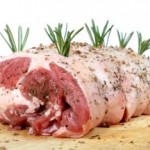 Yum…Protein!!
Yum…Protein!!
convenient but this program is manipulating a lot of variables (i.e. satiety triggers etc.) so the shakes are out for 30 days.
You’ll see a lot of writers these days extolling the virtues of only eating grass fed beef and wild salmon, free range eggs and chicken etc etc. and there is something to what many of them say – especially if you are in the US or Canada – about the potential health risks inherent in ‘normal’ foods, farmed the normal way. In Australia & New Zealand the use of drugs in livestock and so forth is a lot less.
It is true however that grain feed beef has a high Omega 6 to omega 3 ratio and this is a ratio that needs redressing (see Fats section below for the reasons why) But we don’t all live in a world of financial plenty…
There is the issue of cost. I know that your health is priceless, but the reality is that if you are an adult with adult responsibilities then you may not be able to afford those ‘wild’ sources of protein.
Guess what – so what.
Just eat the protein that you can afford (a quick note here along
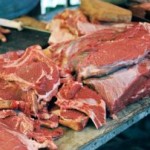 Forget grass fed versus grain fed eat eat you can afford…
Forget grass fed versus grain fed eat eat you can afford…
with shakes – no soy, no tofu no TVP or Quorn etc. – real flesh based protein only) and you’ll get results. Add some supplements (buying & using the few that I’ll suggest further on will still be cheaper than going the organic / grass fed / free range / wild only route) Again of you can afford it, fine go the organic route if not then leave the optimum protein sources out of your musings – if you can afford grass feed beef or free range eggs – great have them! If not, then eat the beef you can get – just try to make it as lean as possible, and the eggs you can afford.
No matter what though – eat your protein first.
How much protein? Try to eat about a gram of protein per pound of bodyweight or more. This will not be easy – a 100 gram steak contains about 21 grams of protein. So when I say 1 gram of protein per pound of body weight I don’t mean 1 gram of steak (or Chicken / veal / lamb / pork / salmon etc) I mean I gram of protein. If you weighed 200 pounds then to get your 200 grams of protein from steak you will need to eat about 100 grams (2 pounds) of steak.
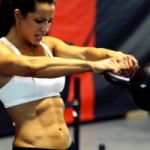 Beginning to see why you won’t have to worry too much about hunger…
Beginning to see why you won’t have to worry too much about hunger…
So in order to get this amount of protein into you each day you need to be a bit strategic and break your protein intake up over each of your daily meals – I find that if you are willing to do some prep time 4 or 5 meals a day makes this easy, but if you’re not then aim for 3 or 4.
Regardless of how often you eat you have to make the protein and the amount of protein specific to you a priority.
Sounds like you have to count calories & grams etc doesn’t it? I hate counting and I bet that you do too, so do it this way:
Figure out what you daily protein target is (for me at 205 pound it is 205 grams) and then plan your protein requirements using the tables below.
For example to get my 205 grams I’d need to eat – over my 5 meals – about 41 grams of protein a meal. So if I have 2 hamburger patties, a decent sized steak then I’m already be half way there. Add in a chicken breast, a can of tuna and a couple of eggs and I‘ve hit my protein target.
NB: 1 Ounce = approx 28grams so 4 oz of steak would weigh 112 grams
Beef
- Hamburger patty, 4 oz – 28 grams protein
- Steak, 6 oz – 42 grams
- Most cuts of beef – 7 grams of protein per ounce
Chicken
- Chicken breast, 3.5 oz – 30 grams protein
- Chicken thigh – 10 grams (for average size)
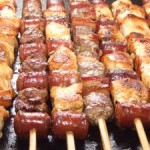 Lots & lots of way to cook & serve protein…
Lots & lots of way to cook & serve protein…
- Drumstick – 11 grams
- Wing – 6 grams
- Chicken meat, cooked, 4 oz – 35 grams
Fish
- Most fish fillets or steaks are about 22 grams of protein for 3 ½ oz (100 grams) of cooked fish, or 6 grams per ounce
- Tuna, 6 oz can – 40 grams of protein
Pork
- Pork chop, average – 22 grams protein
- Pork loin or tenderloin, 4 oz – 29 grams
- Ham, 3 oz serving – 19 grams
- Ground pork, 1 oz raw – 5 grams; 3 oz cooked – 22 grams
- Bacon, 1 slice – 3 grams
Eggs and Dairy (avoid yoghurt – too much sugar even in Greek styles and watch the amount of cheese you eat – remember we want to drop fat and eat lean protein!)
- Egg, large – 6 grams protein
- Milk, 1 cup – 8 grams
- Cottage cheese, ½ cup – 15 grams
- Soft cheeses (Mozzarella, Brie, Camembert) – 6 grams per oz
- Medium cheeses (Cheddar, Swiss) – 7 or 8 grams per oz
- Hard cheeses (Parmesan) – 10 grams per oz
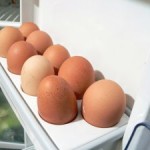 One of the best sources of protein…
One of the best sources of protein…
Fat. For the next 30 days eat healthy fats second at every meal. By fats I mean healthy quality fats, not manufactured ‘franken-fats’ like trans fats.
As I’ve written before eating good fats is essential for fat loss and health. Given the anti-fat blitz of the last few decades this seems counterintuitive but the facts are the facts – processed carbs sugars make you fat, not fat itself. Even the worst of the saturated fats has little effect on fat storage unless it is eaten with processed carbs…
The idea is to try to cook in fats like coconut or macadamia, use olive oil where & when you can, cut out the commercial vegetable oils (really seed oils) like canola, corn or peanut and the like… This way you’ll begin to limit your Omega 6 intake and increase your omega 3’s (more on this below) you’ll not only be helping your body burn more fat but you’ll be reducing one of the main causes of inflammation in the body with all of the attendant horrors like arthritis, heart disease and so forth.
There are many types of saturated fats (our body’s makes omega 9 for example) but we 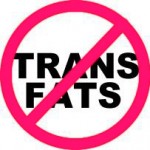 need to get omegas 3 & 6 from our diet. Both are needed for our health but the ratio of 6 to 3 is the problem.
need to get omegas 3 & 6 from our diet. Both are needed for our health but the ratio of 6 to 3 is the problem.
For the US of A consumption patterns over the last 40 years look like this:
Among 18 – 44 year olds in the United States, saturated fat consumption was in at 30 grams per day in 1970, and 27.8 grams per day in 2005.
Omega-6 fatty acid intake, however, was 9 grams per day in 1970, and almost doubled to 17 grams by 2005. Some reports have it even higher now in 2012.
High intakes of omega-6 fatty acids have been linked to cellular inflammation — one of the main factors behind a substantial number of degenerative diseases.
This is why I think everyone should prioritise good healthy fats like this: first increase your intake of omega-3 fatty acids, add in some monounsaturated fats, then use healthier saturated fats (like coconut, macadamia and cacao), and leave omega-6 fatty acids (especially from cooking oils) and less healthy saturated fats (like that in soft cheeses, pork, and chicken skin) last.
Although omega-6 fatty acids are essential to our health, they are so prevalent in so many foods that you would have to try extremely hard (and eat a significantly and dangerously limited diet) to not easily meet your daily requirement.
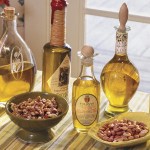 Healthy fats…
Healthy fats…
I want to finish this section on fat by making sure the main points are clear:
- Omega-6 fatty acids are NOT intrinsically unhealthy – we need to consume a certain amount every day for optimal health.
- Many very healthy foods are good sources of omega-6 fatty acids, so I am not advocating total avoidance of foods that contain omega-6 fatty acids.
- However, our western diet contains consistently higher amounts of omega 6 and this pushes our intake of this particular fat too high. There is a very real need for this intake to be reduced because in this case, more is certainly NOT better.
Increasing your omega 3 intake is important to your health and is best done through eating deep sea oily fish (salmon or sardines for example) avocadoes, or taking a quality fish oil or krill supplement. You need to redress the 6 to 3 imbalance (some say it is as high as 20:1) as soon as possible.
The detailed benefits of omega 3 intake will be the subject of another post but for the moment take it as a given you need lots more 3 than 6 in your diet and the sooner the better.
The way to achieve this is to limit your 6 intake as much as possible and then to increase /
 Don’t get ahead of yourself…
Don’t get ahead of yourself…
top up your 3 levels.
So eat your protein and then top up your Omega 3, by having some high quality fish oil with every meal. Aim to be having 2-3 grams of combined DHA/EPA per meal. (again – a fish oil capsule is usually 1 gram but it only contains about 450mg of 3’s so you need to take a few capsules – 5 or 6 at least)
But how much Omega 3 do I need?
Frankly I believe that everyone should be having 4-6 grams a day because of the many beneficial effects of Omega 3s’. Omega 3’s fight inflammation, help regulate insulin response, are used in a host of body repair mechanisms, are used in hormone production are important for brain health and even, it is not suggested are associated with maintaining telomere length – one of the most sought after anti-aging effects. Your body needs these…
Other writers suggest the following:
 Abs so lower need of Omega 3’s
Abs so lower need of Omega 3’s
If you can see your abs, you have no sore joints (except after a heavy session in the gym) and have no arthritic signs then you’ll be okay with 2-3 grams a day.
If your joints ache, you have a touch or more ) of arthritis, your abs haven’t been seen for a while – then you’ll need to be having 4-8 grams total EPA/DHA per day.
If you get back to the visible abs level then you can reduce this to 3-4 grams.
Again try to divide your daily intake roughly equally across your meals.
Remember though the focus is on food so the supplements I’ll suggest will be few.
To top up the fat content of your meals try adding a tablespoon of one of these healthy fats: Butter – not dairy soft, not a blend just good old butter; ghee, coconut oil, olive oil, avocado oil or best of all the rendered fats from an animal source. Yep good old lard – nothing makes cooking taste better. In fact all of these good fats when used for cooking add flavour that is second to none.
Of course if your meal is heavily weighted towards salmon, sardines, anchovies or lean
 Deep sea fish are great for protein & omega 3’s
Deep sea fish are great for protein & omega 3’s
beef / pork / lamb then you can skip the added tablespoon (still use the above sources for cooking though!)
Cook your meat with the fat on, leave the skin on your chicken – these fats are not the enemy. Feel free to remove the skin or the fat after cooking if you must ( I still do with pork – just can’t eat it I’m afraid!)
For Cooking: Cook in coconut oil (low to high heat), Macadamia oil (high heat), olive oil (low temperatures) or use red palm oil (all temps) or use lard or butter.
Any other so-called vegetable oils other than those mentioned above should be banned from your table, kitchen & pantry for good – your good and the wellbeing of your family.
FAT SUMMARY:
- The best way to get good fats into your diet is through lean protein sources such as beef, & lamb or through marine sources like oily fish – salmon sardines etc.
- Next is to use the right oils to cook with (see above)
- Butter & Ghee
- A Fish Oil or Krill supplement
- Avocado
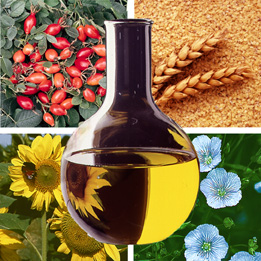 Vegetables. Eat these third at every meal for the next 30 days. Yep last but for fruit ( that only if you are still hungry)
Vegetables. Eat these third at every meal for the next 30 days. Yep last but for fruit ( that only if you are still hungry)
You should be about 80% full after your protein & fats so now fill up the remaining 20% with veges.
Some folk will say avoid starchy vegetables like potato – ignore this have some if you want just don’t fry them because this makes them lethal in terms of adding fat.
The best path to follow is to eat as many colours of vegetables as you can every day and at every meal.
The red of capsicum, the yellow of squash, the white of cauliflower, the green of rocket, the orange of carrots – there is a lot of colour to try & fit in!!
Just finish each meal by eating a variety of vegetables until you are no longer hungry. The colour idea is important as this will ensure that you get the widest range of micronutrients
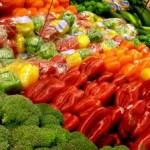 Colourful eating is key…
Colourful eating is key…
possible.
You can do by having a stir-fry, steamed veggies, raw veggies, a big salad, a casserole, or roasted in the oven. Have whatever makes you happy.
Use spices and olive oil and a touch of vinegar or soy for flavour.
Remember variety is the key – don’t get stuck with the same 2 or 3 vegetables – you’ll get bored and you won’t get as much nutrition as you could.
Still hungry? – then have some fruit but aim for berries or apples or pears.
What about bread you ask?
Ancestrally, we didn’t eat any processed carbs, or even a carb heavy diet, and when / if we did we didn’t eat a lot of it.
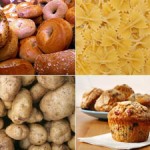 None of these…
None of these…
It is only in modern times that processed carbs have become a staple of out diet.
The longer you go without processed carbs the quicker your body changes its composition and the sooner you get over any carb addiction. You’re trying to lose fat and rebalance your body.
Grain based foods are all processed and all are increasingly indicated as being related to causing various inflammatory diseases (not to mention that good old white bread spikes your blood sugar as fast & as high as table sugar…)
So no grains, no cereals and no legumes for the 30 days and you’ll lose your desire for them long before then). While legumes are a “lessor evil” when compared to grains and gluten, the anti-nutrient content (lignans, lectin, saponins) plus the carb content rules them out. All cereals and all grains out means no quinoa, no oats, no brown rice, even if those grains are also lower on the scale of anti-nutrients.
If you’re fat and need to lose some you’ve probably got at least a touch of an insulin
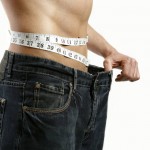 What you’re after – less fat, more lean…
What you’re after – less fat, more lean…
resistance problem and some the need for some metabolic reconditioning.
Drink tea green is good hot or cold), coffee, diet sodas and lots of water. That’s it no fruit juices, no vege juices, no Coca-Cola, no chocolate shakes – just sensible low calorie beverages.
Eat the way that I‘ve suggested above and prepare to be amazed as your body changes and you feel better, stronger and leaner. The nutrient density of a meal like this is incredible.
Here is the main guideline again.
Make every meal a healthy sequence of Protein, Good Fats, and Veggies in that order.
Add in Omega 3 supplements, a multivitamin (to ensure that you get all of your micronutrients) & Vitamin D3 (if you’re not getting much sun). Anything else is surplus, and purely elective.
Try to eat only when you’re hungry but make sure you get your protein target hit every day!!
Exercise: Move more. Lift heavy weights 2- 4 times a week, for never more than an hour
 Get outside & move more…
Get outside & move more…
at a time. Walk often. Stand more, sit less. Do some sprints every now and again. Remember HIIT. Jump rope, ride a bike – have fun!!
Get outdoors more often for Sun and fresh air and just for not being indoors so much!
Chase down 8 or 9 or even 10 hours of sleep a night. Sleep helps you lose fat. Lack of sleep helps make & keep you fat!
Do this for 30 days and be amazed.
See you next week.…




